Tokyo restaurant isn’t kidding about the name of its overflowing rare wagyu-ju【Photos】
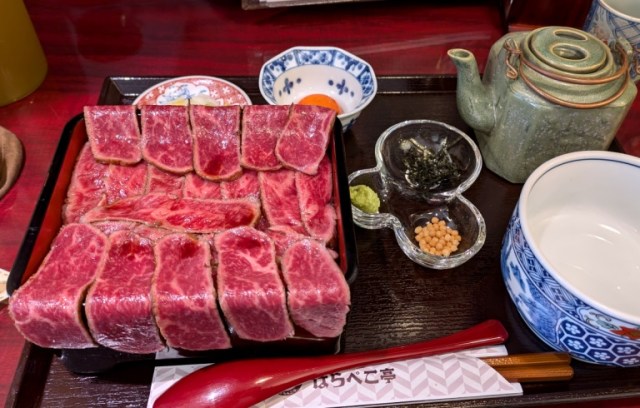
It’s hard to imagine a more honest name than the Kobore Wagyu Rare Steak-ju.
If you’re a foodie who’s into Japanese cuisine, you’ve probably learned that “don” indicates a rice bowl of some kind, like how oyakodon is a bowl of chicken and egg over rice or katsudon is a pork cutlet bowl. Another suffix you’ll sometimes come across, though, is “ju.”
Loosely meaning “layer,” in culinary contexts ju refers to a box of rice with toppings. But while technically the only difference between don and ju is the type of container it’s served in, in practice restaurants’ ju tend to be more luxurious than their don cousins, and we stumbled across a great example of this (in terms of clearly illustrating the phenomenon and being delicious) at a restaurant in Tokyo’s downtown Shinjuku neighborhood.

Called Harapekotei, the restaurant bills itself as a wagyu-dokoro, or “a place for a place for Japanese beef.” What really convinced us to give the place a try, though, was the sign they’d posted outside the restaurant promoting their wagyu rare steak-ju.
So we bounded up the stairs to the second-floor entrance and walked inside. The restaurant’s atmosphere has an elegant retro air with stained glass windows and rosewood countertops, which makes the meal ticket vending machine you order from feel a little out of place, but not so much as to dampen our excitement as we looked over our options.
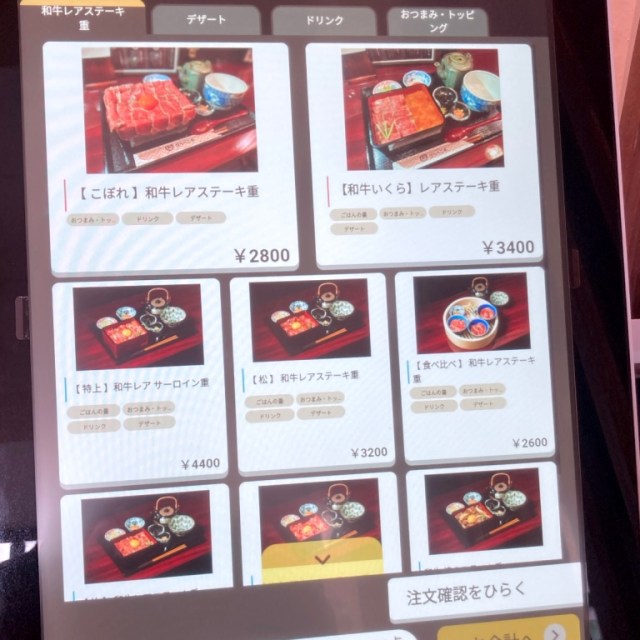
We decided on the Kobore Wagyu Rare Steak-ju, which you can see at the top left in the photo above, for 2,800 yen (US$18.65). Kobore means to “spill” or “overflow,” and Harapekotei isn’t kidding about the amount of wagyu, or how rare it is.
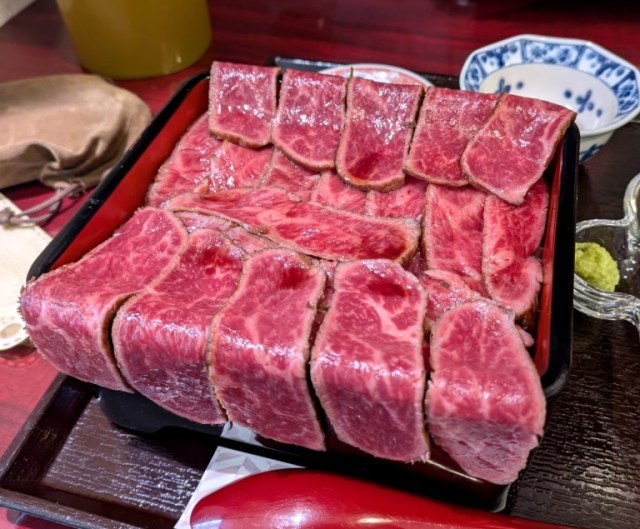
Glistening with marbled succulence, the strips of beef completely cover the rice as they slide over the box boundaries.
▼ We’ll get to what all those other dishes and bowls are for a little later on.
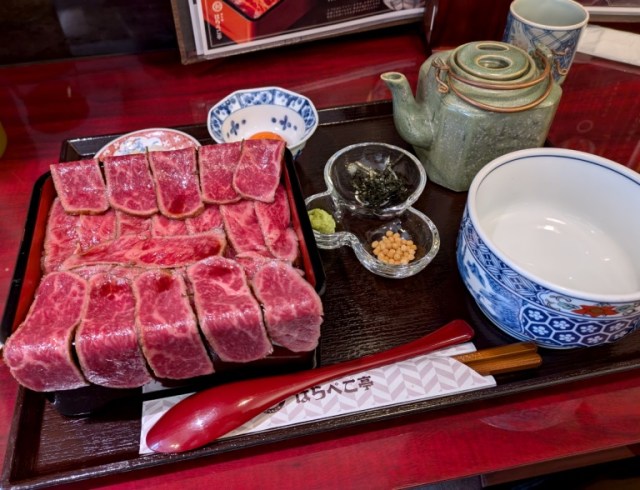
Part of what makes the meat so shiny is that it’s treated with a soy sauce-based sauce, which adds a touch of additional salty sweetness. The main star of the flavor show here, though, is the meat itself, which is flavorful and incredibly tender, so much so that the strips of beef feel like they’re going to melt in your mouth and require hardly any chewing.
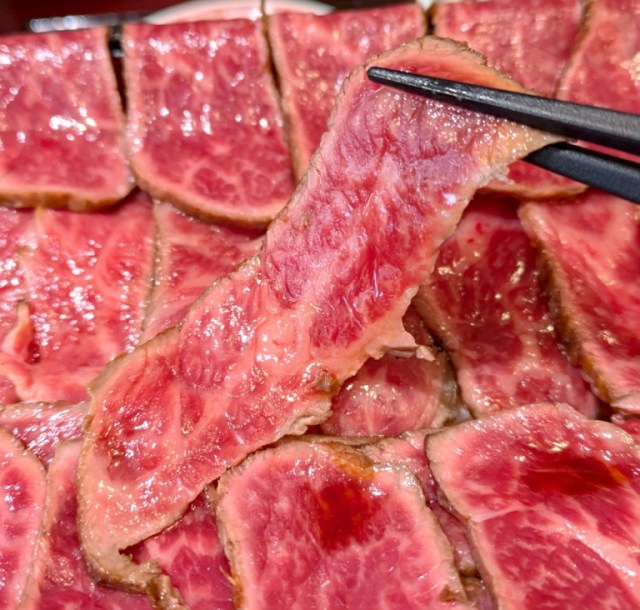
We could have happily eaten the whole thing as is, but as we alluded to, there’s a reason why they give you a bowl with the Kobore Wagyu Rare Steak-ju, which, as per the definition, is served in a box. Harapekotei recommends eating your meal in three stages, as outlined on a placard placed at your table.
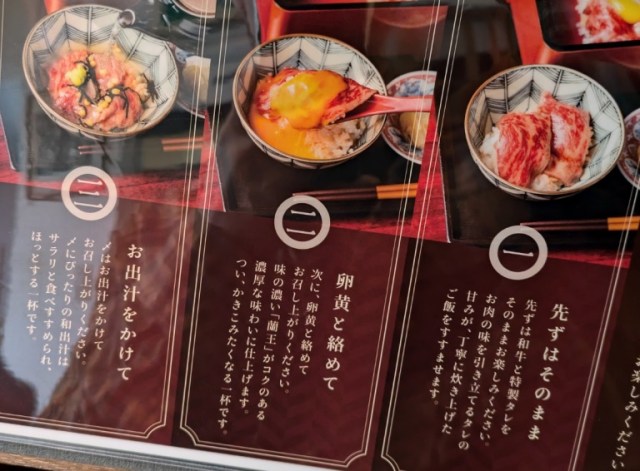
For the second stage, Harapekotei suggests placing some of your rice and beef in a bowl, then stirring in a raw egg yolk.
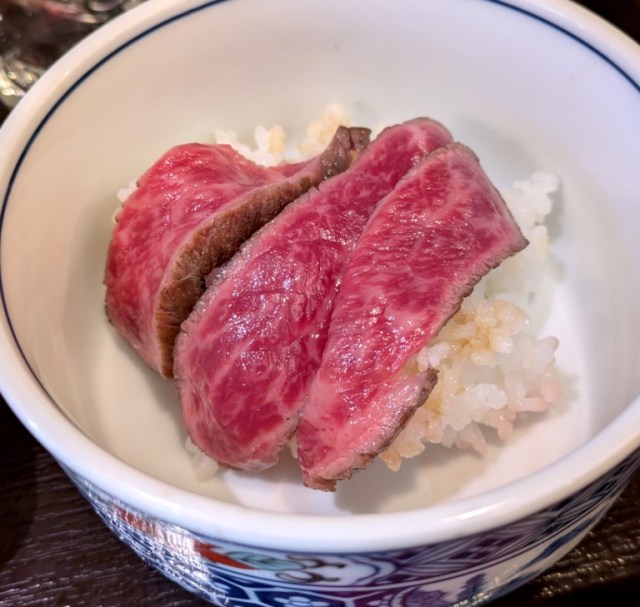
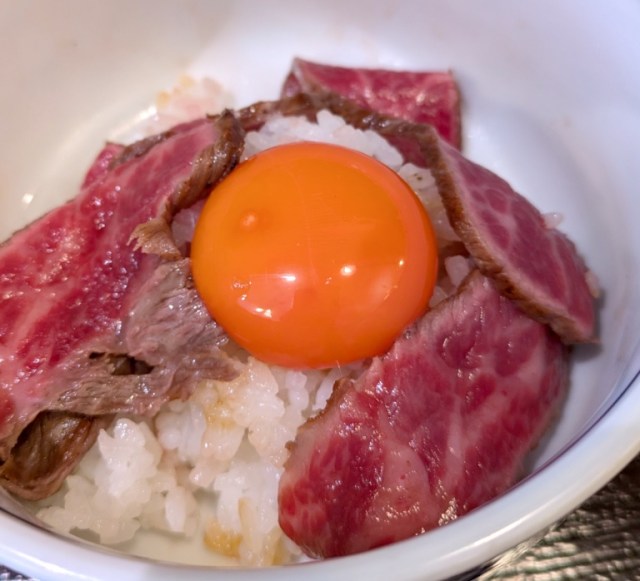
If you’re thinking that yolk is a particularly pretty color, that’s because it’s a gourmet brand called Rano, harvested from chickens in Oita Prefecture that are given a special feed, made with carefully selected natural ingredients, that’s high in plant protein. The yolk is creamy and sticky, with a tasty sweetness to it.
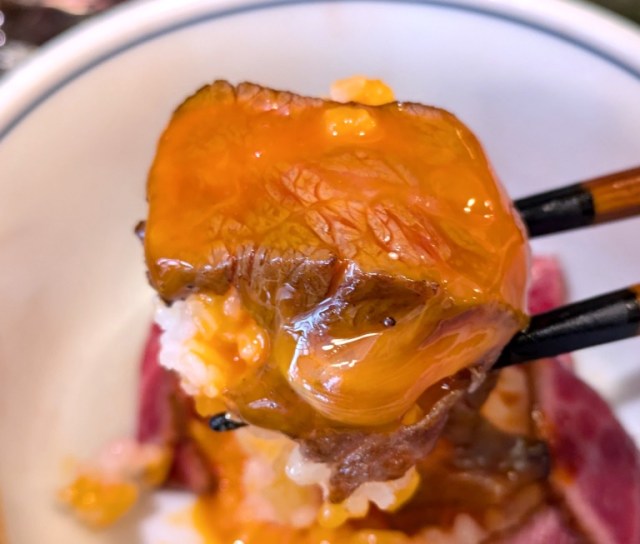
Finally, Harapoekotei recommends once again putting beef and rice in a bowl, and this time adding dashi (bonito stock), along with strips of dried seaweed, tenkasu (bits of cooked tempura batter), and a dab of wasabi.
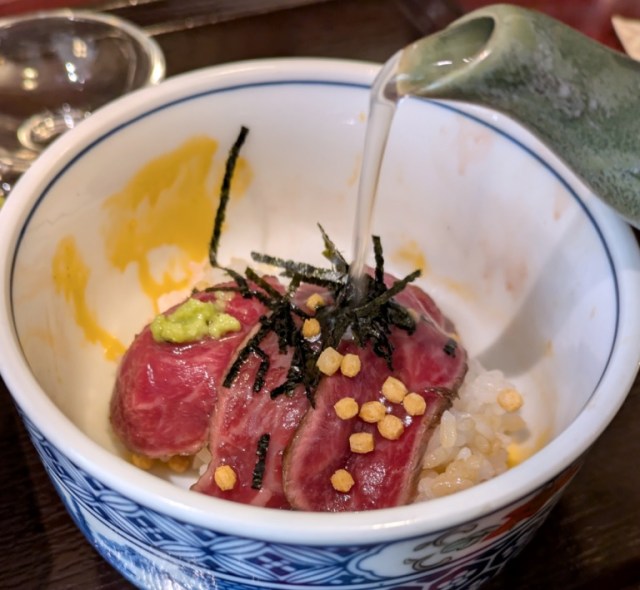
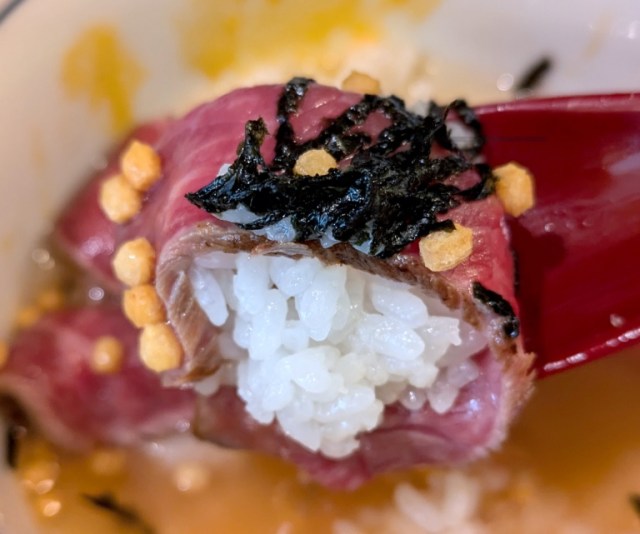
This three-stage eating plan is similar to what’s done with hitsumabushi, a luxurious meal of unagi (fresh-water eel) served over rice. But while we enjoyed all three, our favorite was honestly the very first, enjoying the strips of wagyu without any other extra alterations, and we think that’s how we’re going to eat the majority of our Kobore Wagyu Rare Steak-ju the next time we visit Harapoekotei.
Restaurant information
Harapekotei / はらぺこ亭
Address: Tokyo-to, Shinjuku-ku, Shinjuku 3-23-4, Kurosawa Building 2nd floor
東京都新宿区新宿3-23-4 黒澤ビル2F
Open 10 a.m.-3 p.m., 5 p.m.-10 p.m.
Photos ©SoraNews24
● Want to hear about SoraNews24’s latest articles as soon as they’re published? Follow us on Facebook and Twitter!
Credit:

0 comments: